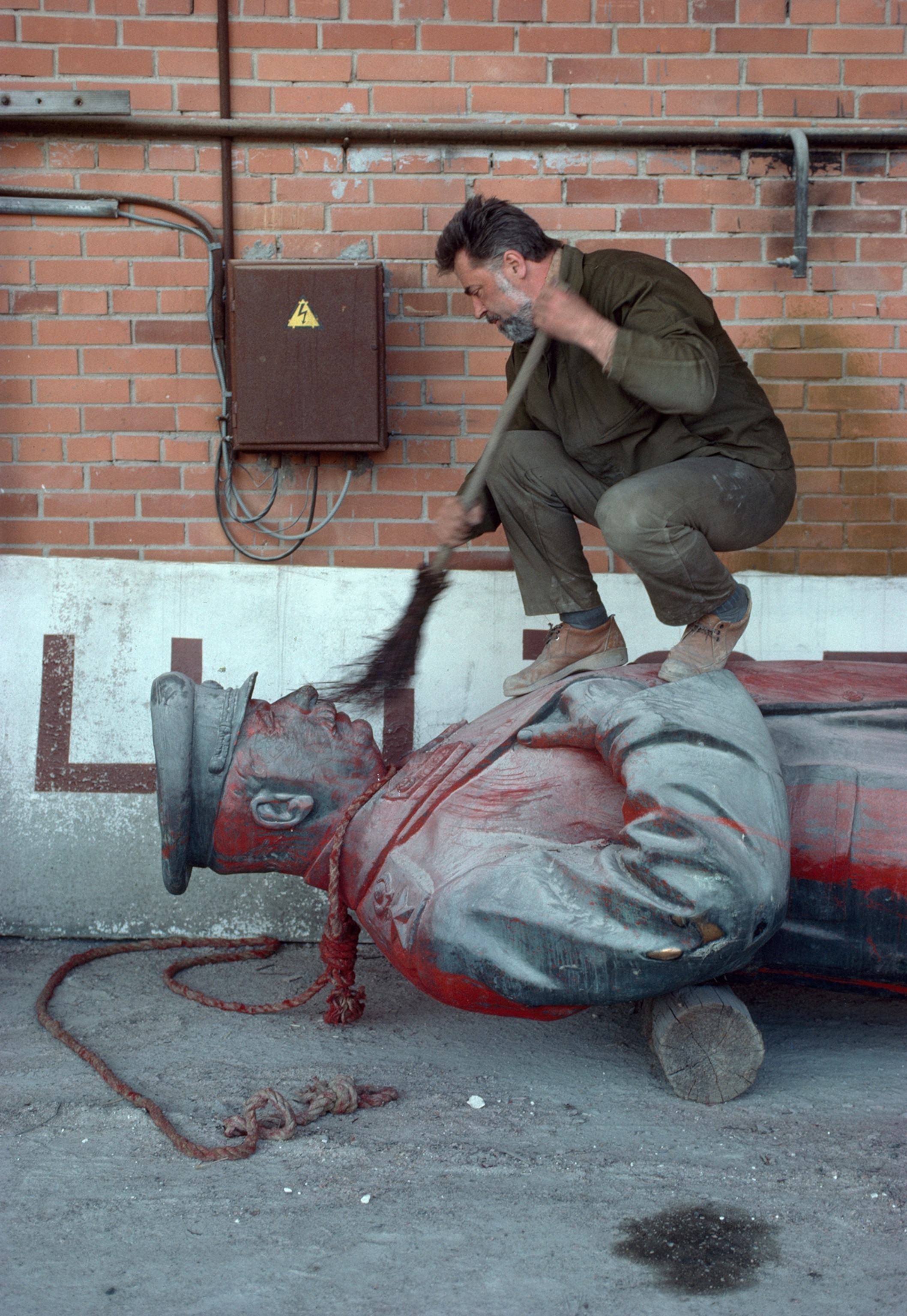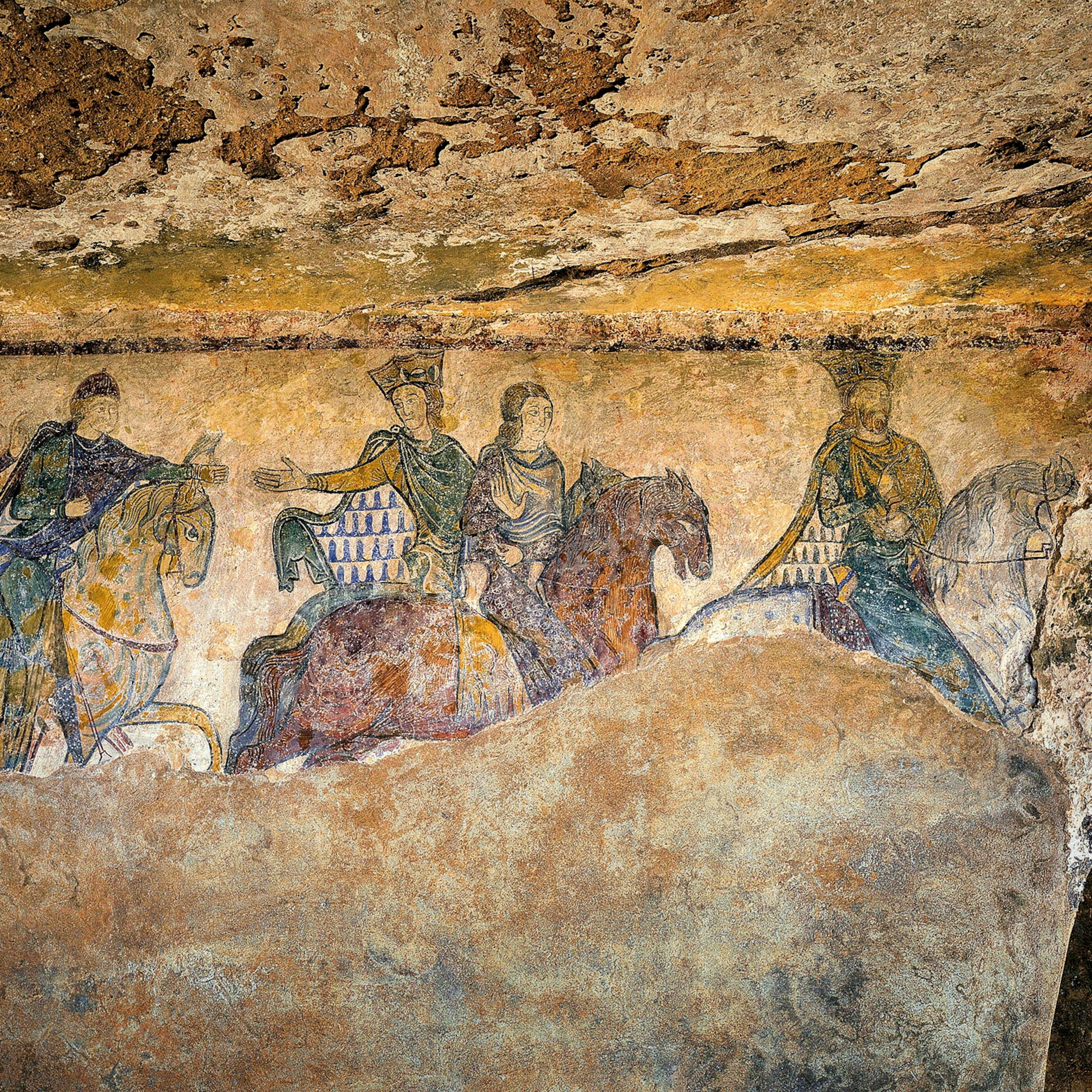
25 Years On, Collapse of Soviet Union Still Brings Cheers—and Tears
The U.S.S.R. was officially dissolved on December 26, 1991. A veteran National Geographic writer reflects on events that must never be forgotten.
“We are living under the carcass of a dead cow, and it stinks,” said Algimantas Cekuolis, a Lithuanian politician. “There are two electrodes attached to this carcass, and every once in a while it twitches. And that cow’s name is Bolshevism.” Cekuolis smiled as if he had just emptied stale beer into the sink.
It was 1990, only a few months before the carcass twitched its last—when one of history’s largest and most powerful empires died with a whimper. I was on assignment in the Baltic States for National Geographic when Soviet Premier Mikhail Gorbachev’s policy of glasnost (free speech) first popped the bottle and released a thousand genies. Speech, indignation, and opinions billowed out like steam. (See Nat Geo pictures of the rise and fall of the Soviet Union.)
The Soviet Union, technically based on the ideals of mutual aid and human camaraderie, had not flowered as planned in Russian soil. Those who ruled the Soviet Union distrusted and feared their citizens; the citizens, in turn, distrusted and feared their government. And yet this tenuous empire survived for nearly 70 years and three generations, dominating the 20th century. (Also see "Why Many Young Russians See a Hero in Putin.")
The Union of Soviet Socialist Republics (U.S.S.R.) was forged by a band of left-wing radicals, the Bolsheviks, who led an armed attack on the Russian government in February 1917, storming the Tsar’s winter palace in Petrograd, now known as St. Petersburg. It was first formalized in 1922, with Russia, Belarus, Ukraine, Armenia, Georgia, Moldova, and Azerbaijan as members. In 1940 it forcibly annexed the independent Baltic States of Estonia, Latvia, and Lithuania.
A Narrow Escape
I was born in Estonia during the Nazi occupation of the Baltics. In the summer of 1944 my family and I fled from the approaching Red Army along with thousands of other Baltic people. Many of us were crammed into German hospital ships and troop carriers heading west. Soviet dive-bombers sank one ship, the Moero, killing more than 1,500 people. When the Allied invasion of Europe reached Germany in 1945, we were waiting, hiding in the hayloft of a kind German farmer along with 20 Hungarians.
In the Estonia we left behind, the returning Soviets brutalized the population with a roundup of artists, teachers, intellectuals, and suspiciously successful farmers, eventually consigning more than 10,000 people to Siberian labor camps. In Ukraine, Soviet policies led to the starvation of millions. For the following 50 years the citizens of the Soviet Republics found themselves press-ganged to serve the interests of an experimental state led by Moscow. At the end of World War II the Soviets solidified another buffer zone of defense, seizing control of Poland, Czechoslovakia, Hungary, East Germany, Romania, and Bulgaria—the final pieces of the “Soviet Bloc.”
Most people in the Soviet Bloc, although deeply patriotic, found socialist life dispiriting and eventually pointless.
My five assignments in the Soviet Union for the Geographic were stimulating but often contentious. The Soviet agency assigned to aid foreign journalists, Novosti, was a fountain of misinformation. Reason held no currency against dogma; black was often offered as white. And, throughout its more than 70-year effort to retool human behavior, the keepers of the U.S.S.R. could never satisfactorily answer this fundamental question: If communism is a superior economic philosophy, why are so many people struggling to escape from communist nations, and none struggling to get in?
Most people in the Soviet Bloc, although deeply patriotic, found socialist life dispiriting and eventually pointless. To ensure loyalty, the government inundated its people with alternate versions of history, the “fake news” of their day. But the contradictions between actual policy and the Soviet constitution, which promised abundant freedoms, were seldom hidden from view. Lies were blatant. Hypocrisy was part of the bureaucratic skill set. Neighbor reported on neighbor. In the Baltic States, border police raked the sand along the seashores each night so they could follow the trail of footprints left by would-be defectors.
Fall of the Wall
The most potent symbol of the Soviets’ distrust of their citizens was the Berlin Wall, built in 1961 by Soviet-controlled East Germany (officially known as the German Democratic Republic, or GDR). The purpose of the wall was clear: to keep the people of the GDR in, and Western influence out. The Soviets called it the “anti-Fascist protective barrier.” In the following decades nearly a hundred East Germans, attempting to breach the Wall and escape to the West, were gunned down by their own border police.
At its apex in the 1970s, the U.S.S.R. comprised nearly 300 million people and 100 distinct ethnic groups, stretching across 11 time zones on the largest landmass on Earth. It developed nuclear weapons, sent cosmonauts into space, and generated power, pride, and fear. As Soviet life softened in the 1970s and '80s, and advances in communications technology made it more difficult for the state to hide its flaws, Premier Mikhail Gorbachev attempted to stave off social revolution by granting glasnost (free speech) and perestroika (restructuring). The pot simmered.

National Geographic Senior Writer Mike Edwards, assigned to cover Moscow in the late 1980s, found the change dramatic. “Even five years ago you couldn’t have a casual, candid conversation with an ordinary person,” Edwards told a Geographic archivist. “It just would not happen. He would be terrified to be seen talking to a foreigner. Now you get to Moscow and people can’t stop talking to you. They want to tell you how bad life is. The frustration that builds up in people, and the anger that builds up standing in line for hours—200 people standing in line to buy ten eggs. And so you find people screaming at each other. Sometimes fist fights.”
On November 9, 1989, a colleague at National Geographic headquarters in Washington came charging down the hall with news that West Germans were literally dancing on top of the Berlin Wall by the Brandenburg Gate. Twelve hours later I was in Germany, hustling toward the gap in the Wall at Invaliden Street, where a small bridge spanned the River Spree. Moving toward me in the near darkness were families with small children, mothers pushing strollers, teenagers dressed in pre-washed jeans, businessmen in shabby suits. All streaming through the open gate.
The reality nearly knocked me to my knees, and I sat down and wept. They were East Germans, yes, but in my mind they were also Estonians and Ukrainians, Russians and Armenians. Crowds of jubilant West Germans applauded and shouted welcome, pressing flowers into the hands of their brothers and sisters. Geographic photographers David Harvey, Jim Nachtwey, and Anthony Suau documented one of history’s most dramatic moments.
Free at Last
The tide spread quickly. In 1991, during an attempted coup by hardline Communist legislators to keep the Soviet Union together, Russian President Boris Yeltsin climbed onto a military tank in Moscow’s Red Square to denounce the coup and yank the Russian Republic out of the Union. Within days, the 12 other constituent republics of the empire, from Estonia in the north to Moldova in the south, followed the Russian defection and declared independence.
A raw period of elation, optimism, chaos, corruption, and unregulated capitalism followed the fall of the empire. Oligarchs and con men erected their own castles, and vendors flush with black-market consumables clogged the streets of Moscow. Dissidents and intellectuals celebrated freedom, but much of the Russian population considered free market capitalism a gift that came without an operator’s manual.
Now we mark the 25th year since the end of what U.S. President Ronald Reagan called the “Evil Empire” in 1984. But when former KGB agent Vladimir Putin consolidated power in Russia 20 years later, he lamented the fall of the Soviet Union as “the most catastrophic event of the 20th century.” And the Russian people, humiliated by their fall from global prominence, once again lean toward authoritarian governance and the nostalgic rituals of the Russia Orthodox Church.
Some say the winds of change in post-empire Russia have stoked the fire beneath Western nations that long for economic and social stability. Others lament that the world is shifting toward a stingy isolationism, erecting new walls and uplifting potential strongmen to high office. Empires rise and fall, and few retain their luster. But the demise of the Soviet Union, though now lamented in some quarters, ended a bitter, misguided chapter in human endeavor.








